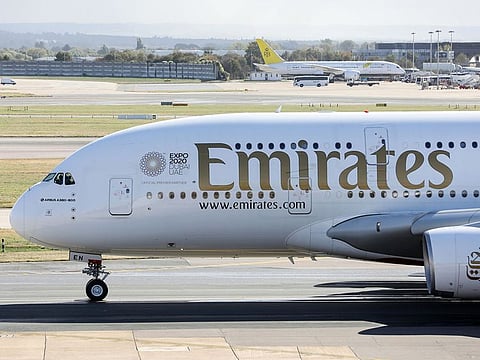How brands made use of COVID-19 downtime will cement their customer relationships
Yes, brand engagement rules are being rewritten but hard won connections will linger

As we emerge from what we hope was the worst of the crisis, people will remember which friends and neighbours helped when times were tough. The same is true for brands - those that have shown agility, creativity and resolve will have influenced the way consumers view them. And they are emerging not just with a viable business, but a sharp competitive edge.
Brands will matter more in the world the virus leaves behind. Smart brands were not just adapting their offering during lockdown, but also their marketing, particularly the tone of voice they adopted to match the prevailing mood. Local brands that were quick to respond to changing needs in light of the pandemic included Emirates, which spoke when flights were grounded as if the event was in the past. “Do you remember when they closed the schools and kids tried to learn online…” its video ad began, listing all the ways people’s lives were changing, but as if looking back from the future.
It concluded: “Sometime soon, we will be talking this way. And when that day comes, Emirates will fly back to the skies and fly you better than ever before. Stay safe. Stay Home.”
Similarly, Majid Al Futtaim Group’s Mall of the Emirates created an ad showing the vast empty spaces in a mall where, at the time, no one was permitted to shop. Its message was ‘This is not farewell’, and urged people to reflect on happy moments spent together but to put their health and safety first during this time of enforced separation.
The Saudi telecommunications operator STC used mid-crisis advertising to show solidarity with people feeling the strain, and to promise its services could be relied on to continue. “Our actions are beyond stopping”, it pledged.
Charting a way out
Emerging from a crisis as complex as this requires a different approach at di¬fferent stages. Here we break this down into two broad time periods.
The recovery period is likely to last several months, and will not be defined purely by changes to government restrictions. People’s own confidence, health and family circumstances will also determine the level of risk they feel is acceptable for them at any given time.
This ‘in-between’ time is important for brands, because while people are re-adjusting their lives and routines, they are looking for new ways of doing things, and seeing old situations with fresh eyes.
Our BrandZ and other data consistently show that when brands maintain their visibility in a relevant, sensitive way throughout a crisis, they not only increase their market share at the time, but also rebound faster and stronger than those that took their foot off¬ the gas. By visibility, we mean not just being physically available to buy from stores, but also available mentally to consumers, because they continue to communicate and therefore stay top of mind.
The challenge now is to be seen as more than just a friend in a time of crisis; there must be clear relevance to consumers’ lives as they start to get back to normal. A usefulness and a shared sense of purpose is required.
Make up for time lost
For brands that failed to optimize their response in the eye of the storm, now is the time to act. People will in many ways be re-learning how to go about their lives. There will be roles for brands that can help consumers form new habits, and for those that can amaze, delight and reassure consumers with new services and experiences.
It is essential that brands listen closely to what their consumers are saying; understanding changes in people’s preferences and priorities will be key to providing the right services and communication that matches the prevailing mood. In a category as focused on physical experiences as much of the retail sector has been, this is especially important.
This is an important time to review how attitudes to specific brands and segments have shifted, even if only temporarily. What once was a fashion must have, might have seemed self-indulgent during a lockdown.
The pendulum won’t instantly swing back, so brands need to listen to the mood music and show they are paying attention. Social networks will continue to be a powerful way of engaging with consumers, and smart brands will be offering content and experiences, not just o¬ffers of discounts.
Focusing on the future
It might still be hard to imagine a time when we travel, shop and dine out just as we used to, and a time when people feel confident enough to make long-term plans. What’s clear is that as we emerge from this fog of danger and anxiety and feel ready to resume normal life, we are all to some extent going to be different people. We have been re-evaluating our priorities and are adjusting to a less certain future.
People are likely to pay more attention to things that cannot be bought with money, such as spending time with family and friends, and pursuits that help them feel spiritually fulfilled.
Sign up for the Daily Briefing
Get the latest news and updates straight to your inbox








